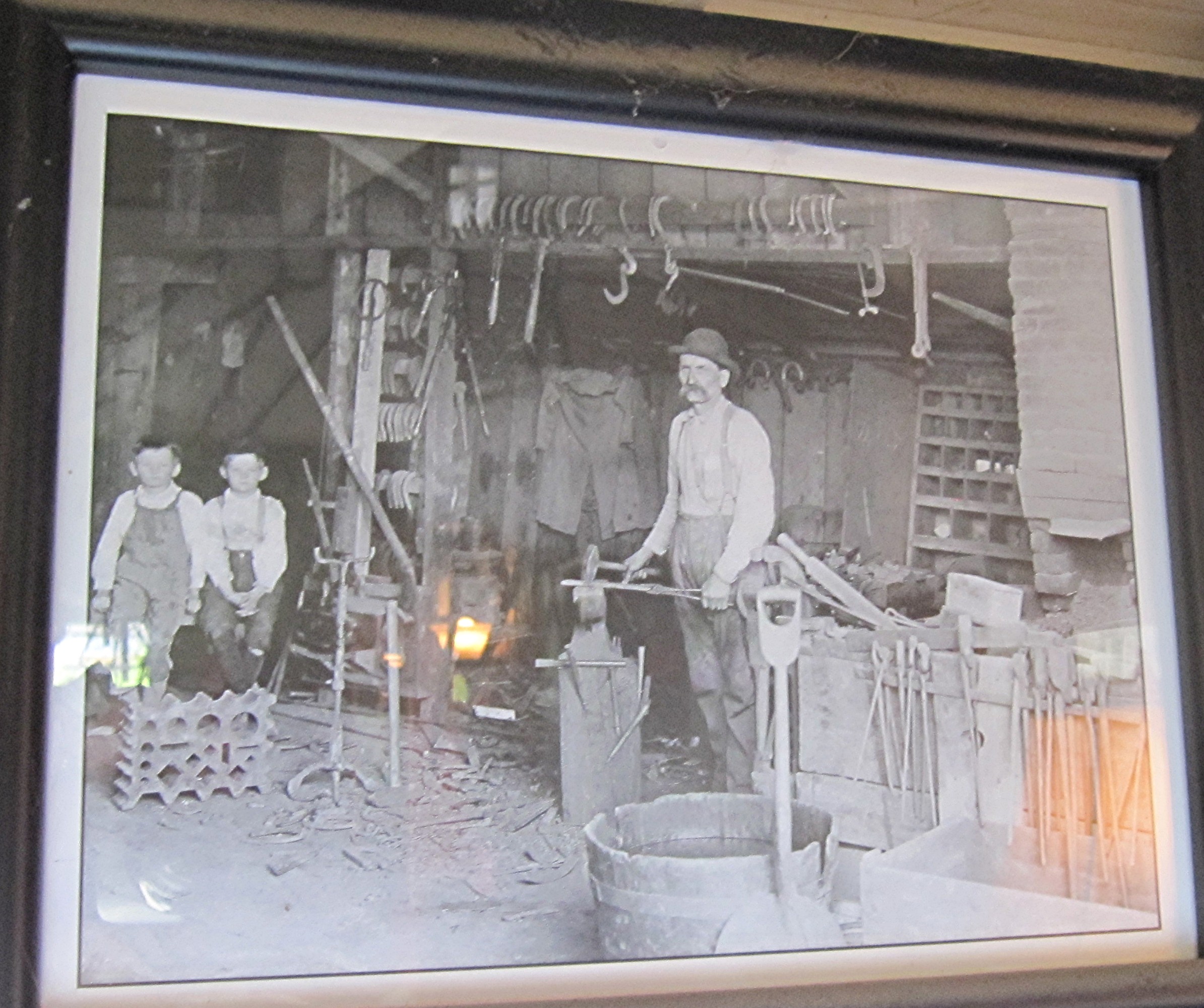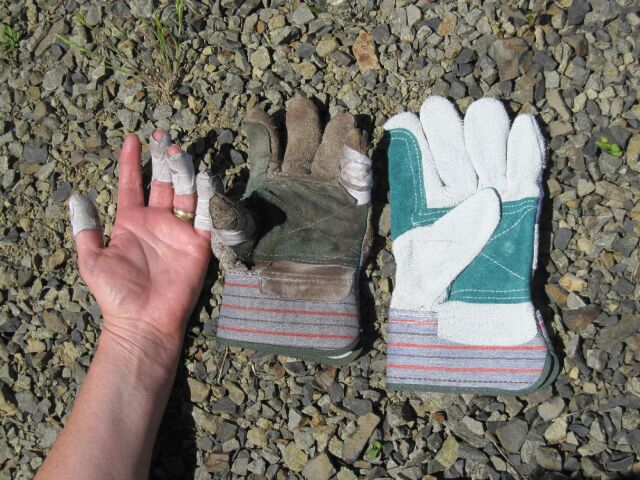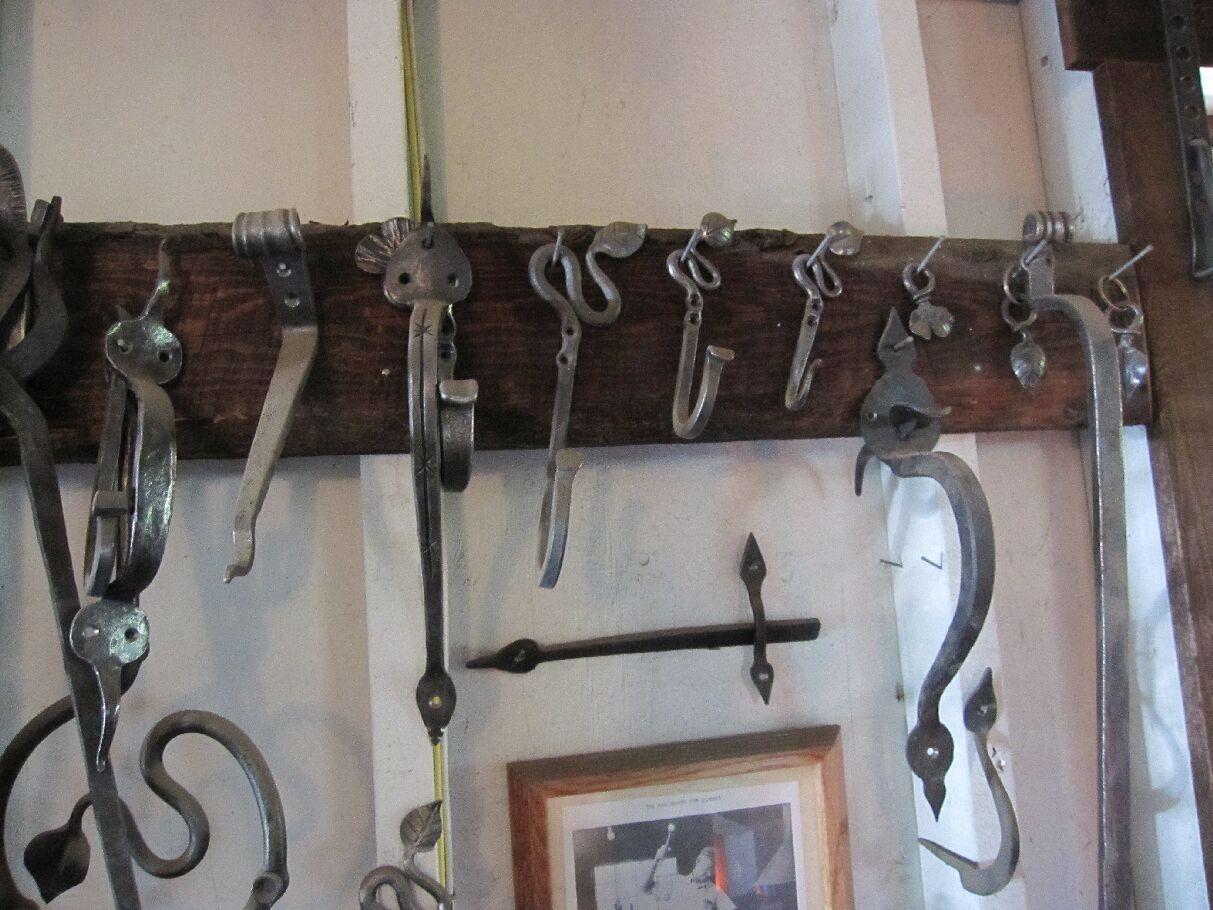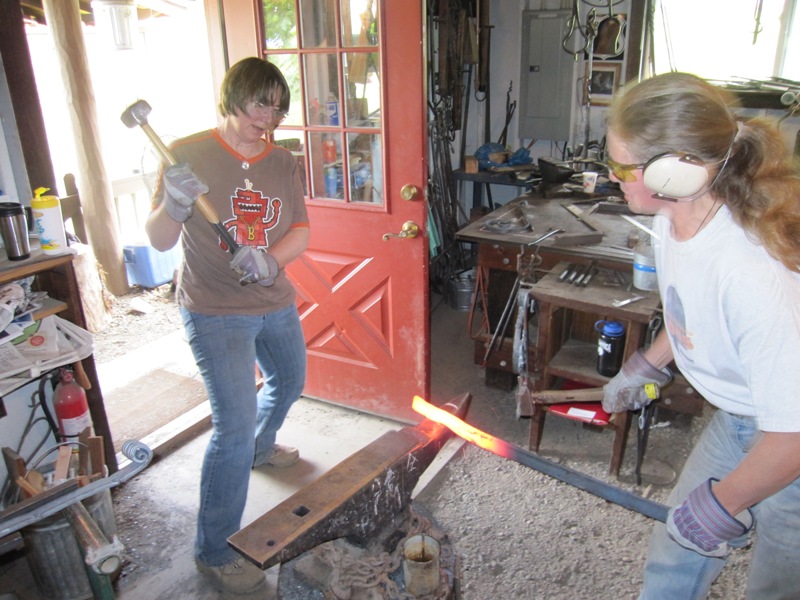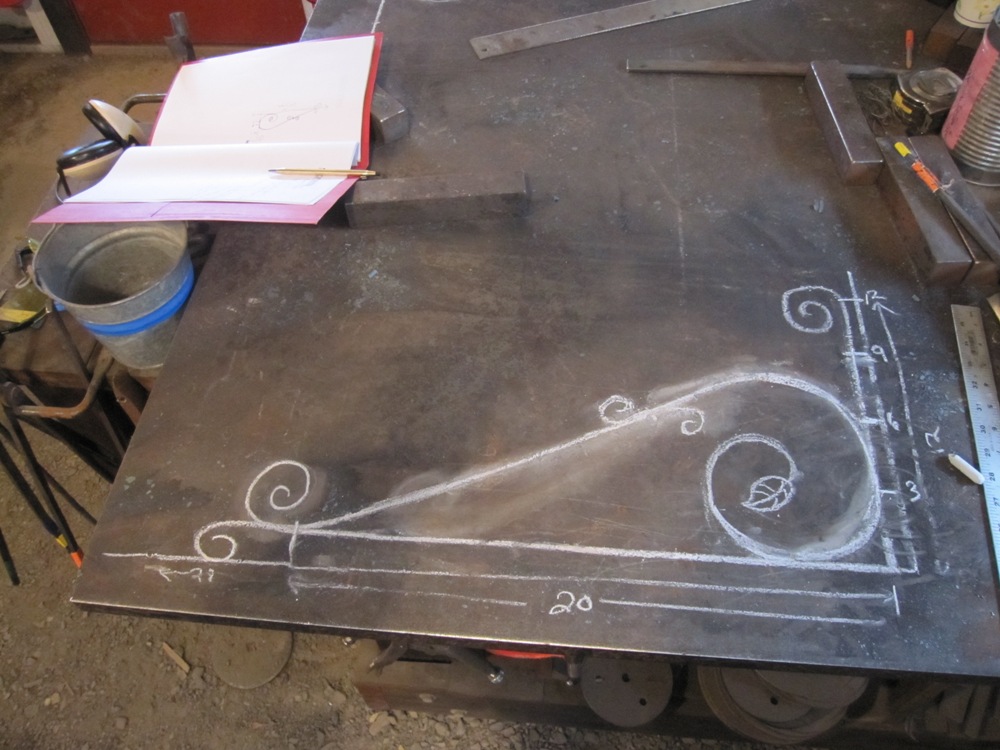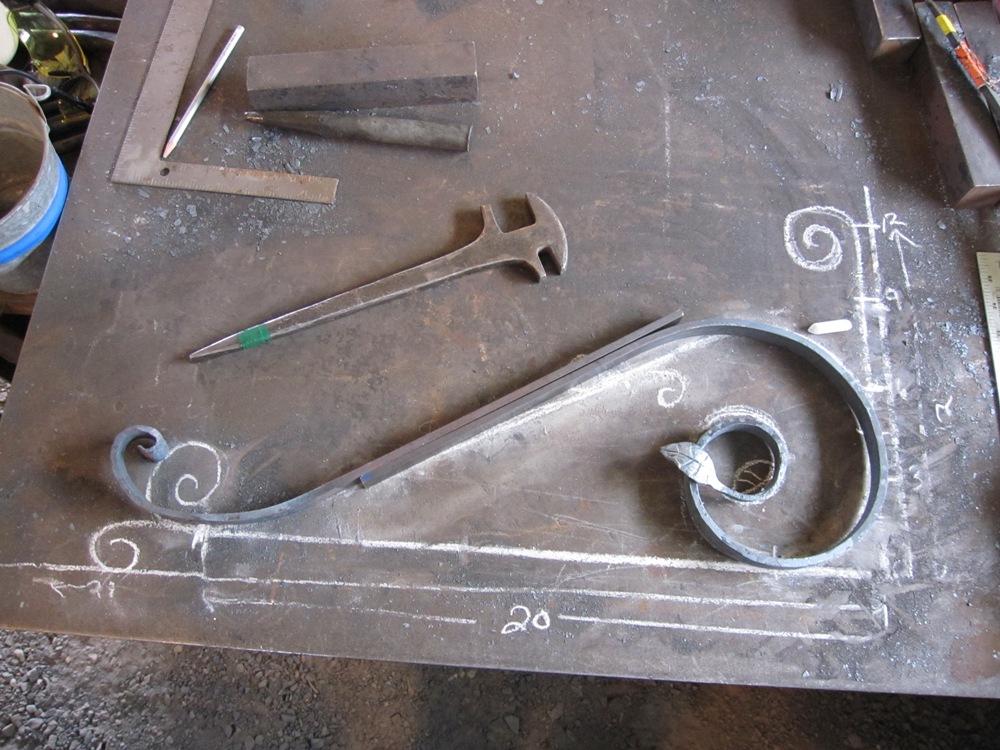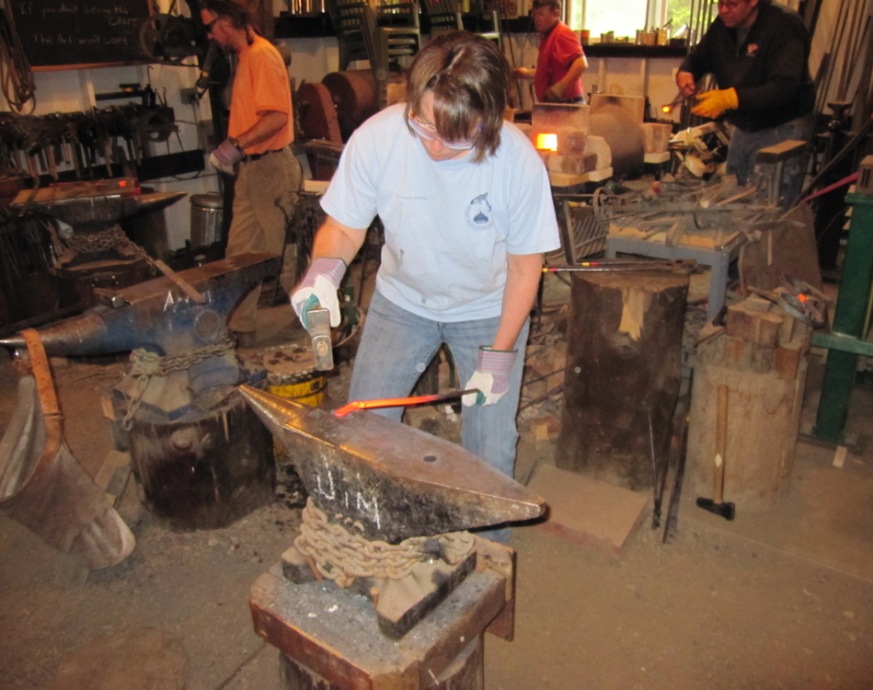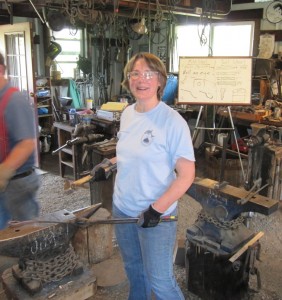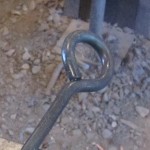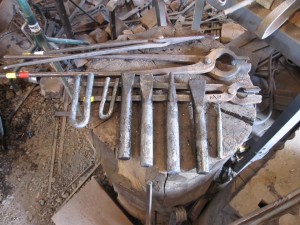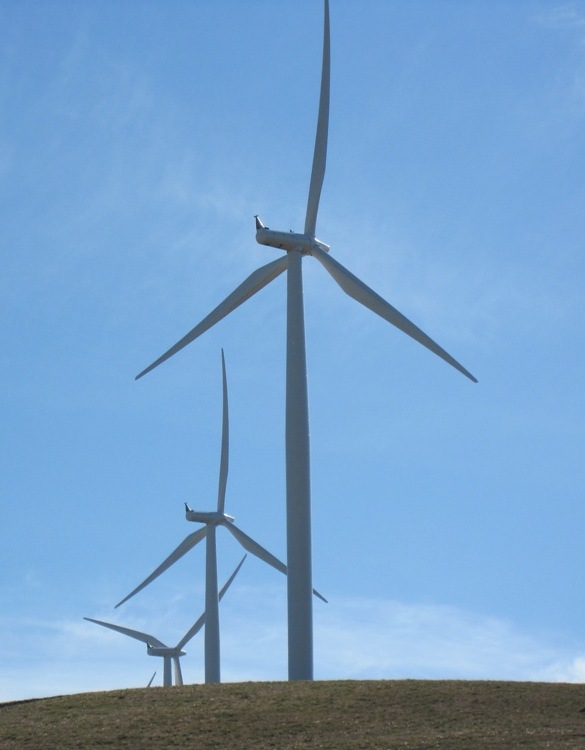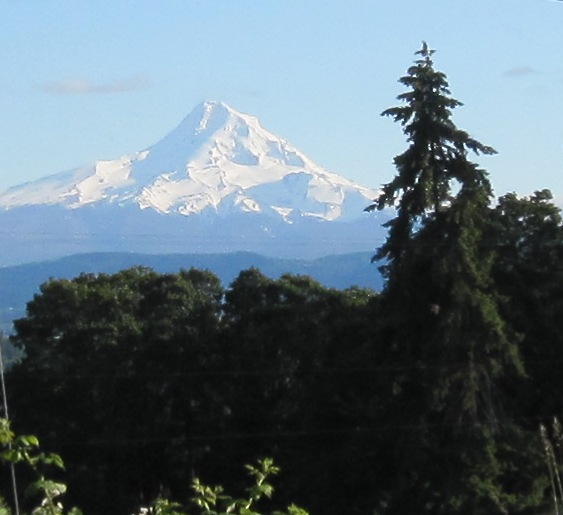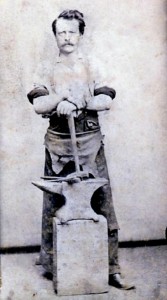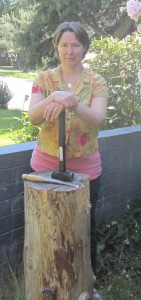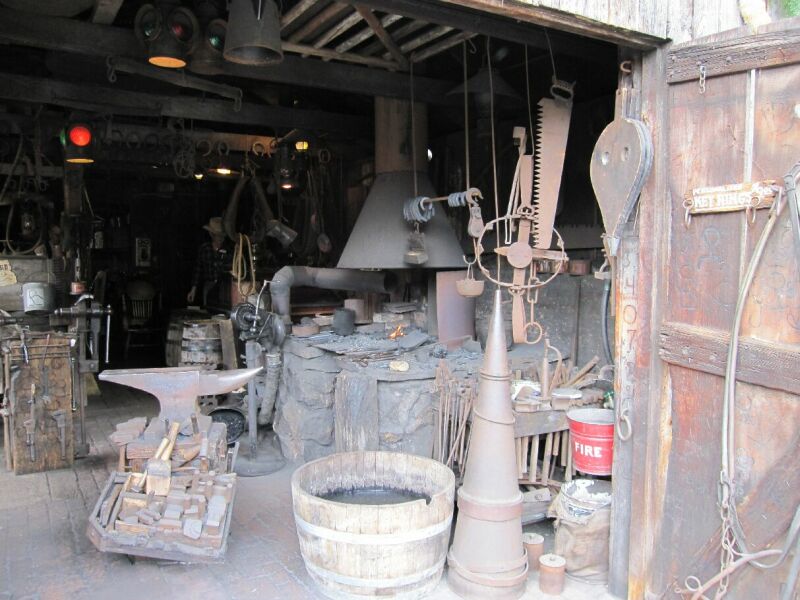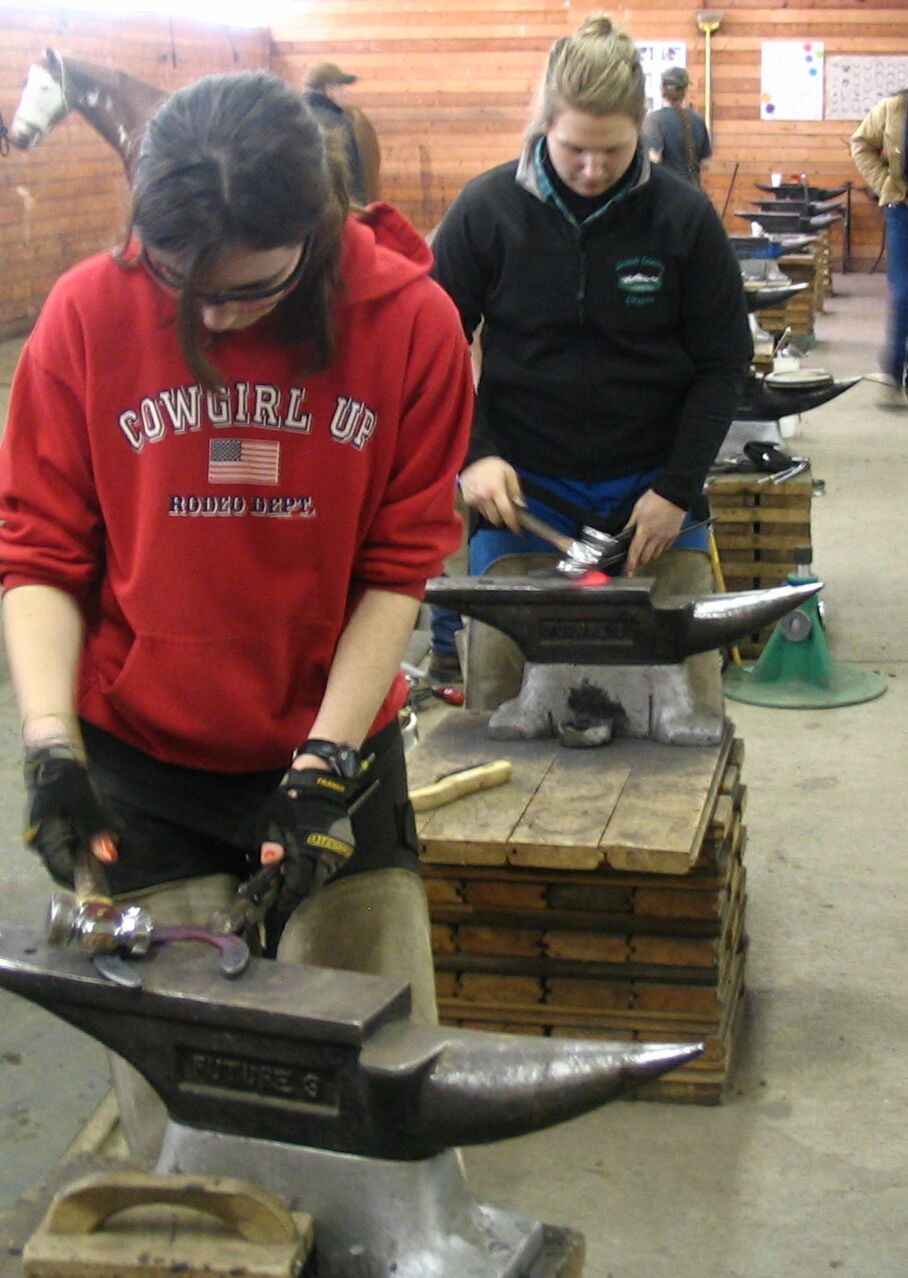 I took the four day blacksmithing class in mid-June. What with one thing and another, the summer is almost over and I never did finish my metalwork.
I took the four day blacksmithing class in mid-June. What with one thing and another, the summer is almost over and I never did finish my metalwork.
My plant hanger and fire pokers still had traces of scales (slag) that needed to be polished off with a stiff metal brush. What’s more, rust had begun to speckle my projects, a sure sign they needed their finishing touches.
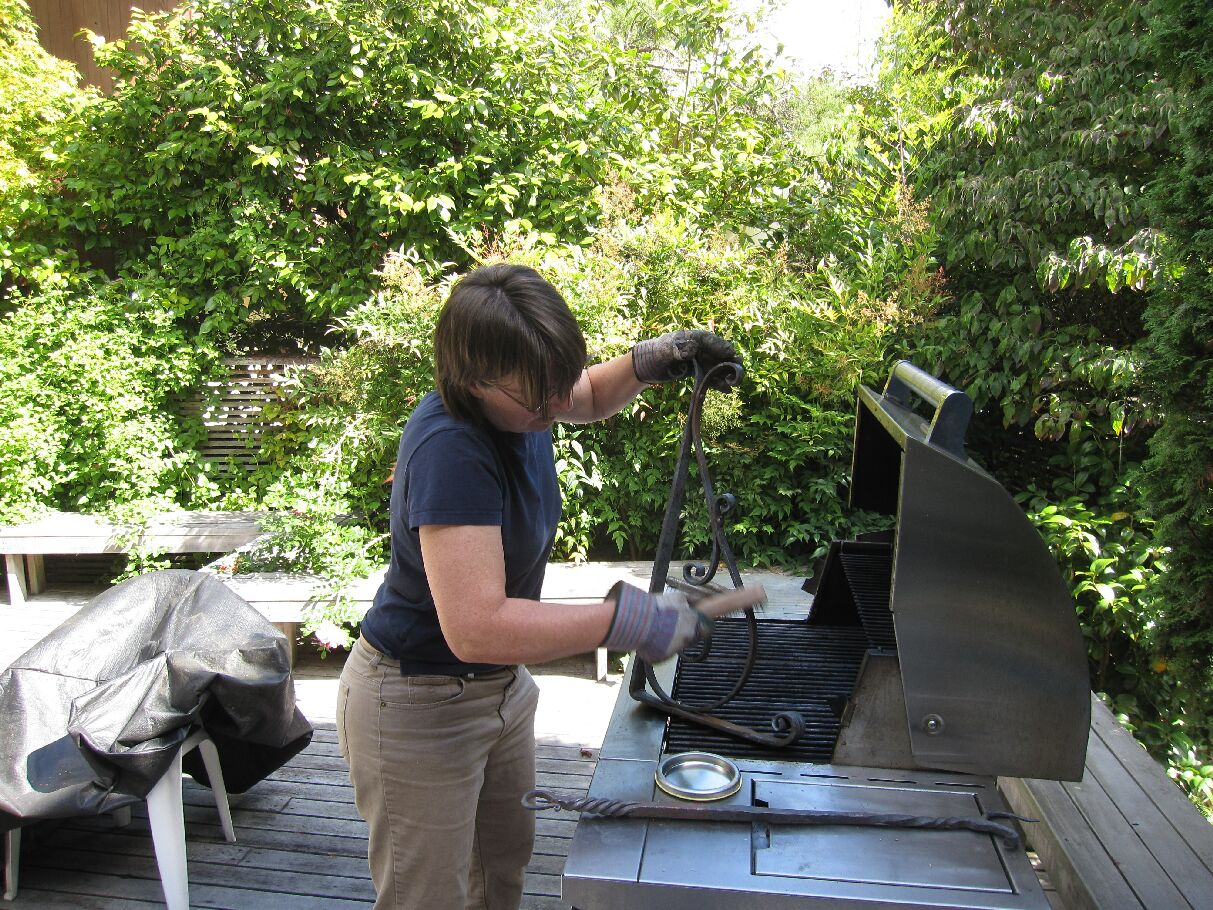 “When you get home, you’re gonna want to finish these,” Tim Middaugh had said, a cup of coffee in his hand, his safety glasses still on as he tipped back precariously in his plastic lawn chair. “Heat ’em up in your oven, or on your grill, to about 200 degrees. Brush ’em really good, and while they’re still warm, rub ’em all over with Johnson paste wax.”
“When you get home, you’re gonna want to finish these,” Tim Middaugh had said, a cup of coffee in his hand, his safety glasses still on as he tipped back precariously in his plastic lawn chair. “Heat ’em up in your oven, or on your grill, to about 200 degrees. Brush ’em really good, and while they’re still warm, rub ’em all over with Johnson paste wax.”
 With some trepidation, I went ahead and followed instructions. Our outdoor grill worked like a charm. I could have used a vise, but settled for a less-than-perfect brushing. Still, most of the scales came off, and the paste wax did the rest. Now my metalwork is officially finished, it feels like summer has come to a satisfying end.
With some trepidation, I went ahead and followed instructions. Our outdoor grill worked like a charm. I could have used a vise, but settled for a less-than-perfect brushing. Still, most of the scales came off, and the paste wax did the rest. Now my metalwork is officially finished, it feels like summer has come to a satisfying end.

